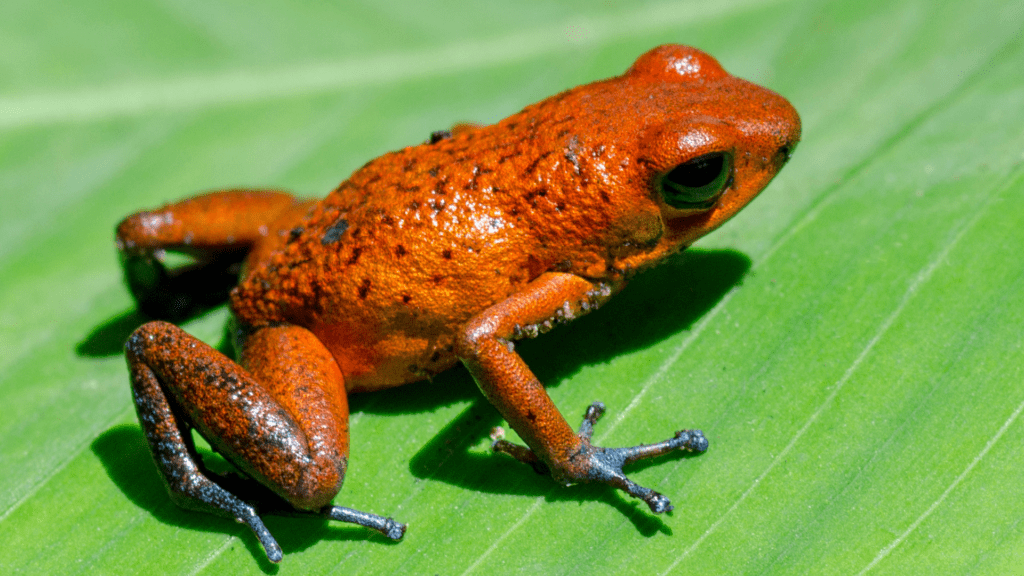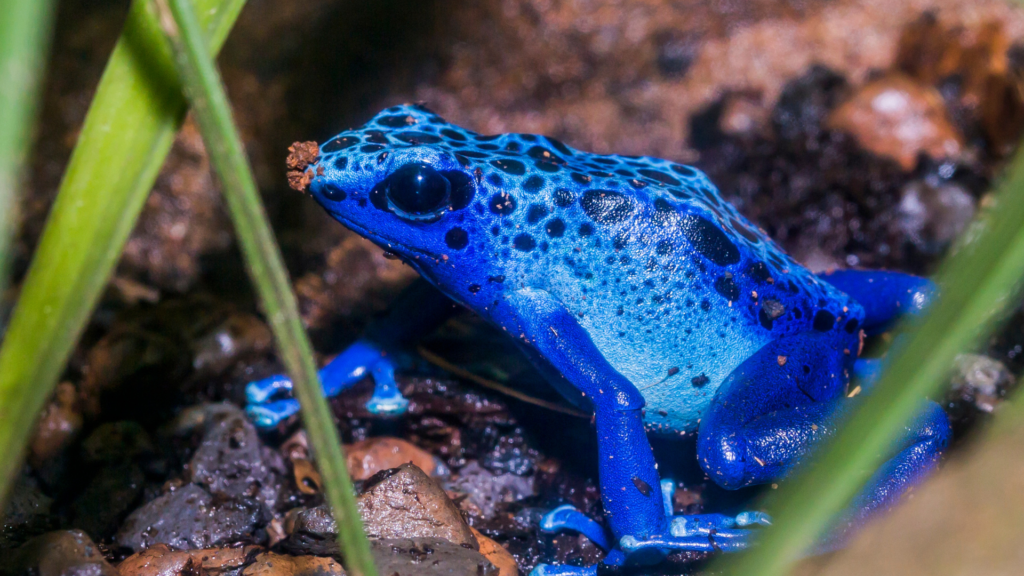Japanese Giant Salamander (Andrias japonicus) is one of the largest amphibians in the world and a fascinating species native to Japan. Known for its impressive size and unique appearance, this salamander is an essential part of Japanese culture and an indicator species for freshwater ecosystem health. It thrives in cool, clear streams and rivers, particularly in mountainous regions. This species is closely related to the Chinese Giant Salamander, with the two species representing some of the oldest amphibians still in existence.
Physical Description
The Japanese Giant Salamander is notable for its massive size. Adults can grow up to 5 feet (about 1.5 meters) in length and weigh over 55 pounds (25 kilograms), making it the second-largest amphibian globally. Its body is robust, with wrinkled skin that varies from dark brown to a mottled gray or greenish-brown color, providing camouflage among river rocks and riverbeds. This species has a broad, flat head and small eyes without eyelids, giving it a distinct, almost prehistoric appearance.
The skin of the Japanese Giant Salamander plays a critical role in respiration, as it can absorb oxygen directly from water, compensating for its underdeveloped lungs. This adaptation allows the salamander to remain submerged in water for extended periods without needing to surface for air.
Habitat and Distribution
The Japanese Giant Salamander is endemic to Japan, primarily found in rivers and streams in southwestern Honshu, Shikoku, and Kyushu islands. This species prefers clean, cold, and fast-flowing water where it can hide under rocks or in crevices. Its habitat selection is crucial, as it requires well-oxygenated water and stable environments to thrive. The species often inhabits mountain streams with low human disturbance, as pollution and habitat degradation are significant threats to its survival.
Diet and Feeding Behavior
This carnivorous amphibian feeds on a variety of aquatic animals, including fish, crustaceans, insects, and occasionally small mammals. As an ambush predator, it waits in hidden locations for prey to come close and then strikes with impressive speed. The salamander’s broad, powerful jaws enable it to capture prey effectively. Additionally, the Japanese Giant Salamander can detect vibrations in the water, which helps it locate prey in low-visibility conditions.
Reproduction and Life Cycle
The breeding season for the Japanese Giant Salamander occurs from late summer to early autumn. Males establish territories in riverbed burrows and compete for females. During this time, the male emits a unique call to attract females, who will then lay between 500 to 600 eggs in the male’s burrow. After fertilizing the eggs, the male guards them vigilantly, protecting them from predators until they hatch.
The eggs take about 40 to 60 days to hatch, depending on water temperature. The young larvae resemble tadpoles and have external gills, which they lose as they mature. Japanese Giant Salamanders reach sexual maturity at around 10 to 15 years of age and can live up to 80 years, although such longevity is rare in the wild.
Conservation Status and Threats
Japanese Giant Salamander is classified as Near Threatened by the International Union for Conservation of Nature (IUCN). Despite being culturally protected in Japan, the species faces several challenges, including habitat destruction due to dam construction, pollution, and climate change. Conservation efforts are focused on habitat preservation, public awareness, and maintaining healthy river ecosystems to ensure the survival of this ancient species.
Cultural Significance
Japanese Giant Salamander holds a special place in Japanese folklore and culture. Known as “Ōsanshōuo” in Japanese, this species is often associated with legends and stories in rural communities, symbolizing endurance and resilience. In some regions, it is revered as a mythical creature that guards rivers and streams. Conservation organizations in Japan use its cultural importance to raise awareness about environmental preservation and the need to protect natural habitats.
Fascinating Facts about the Japanese Giant Salamander
- Ancient Lineage: The Japanese Giant Salamander belongs to a family of giant salamanders that have existed for over 170 million years, making it one of the oldest surviving amphibians.
- Unique Respiration: Unlike most amphibians, this salamander relies heavily on cutaneous respiration, meaning it absorbs oxygen through its skin.
- Longevity: With a potential lifespan of over 80 years, the Japanese Giant Salamander is one of the longest-living amphibians.
- Endangered Habitat: Human activities like dam construction and pollution threaten its natural habitats, leading to population declines.
- Cultural Icon: The salamander is an important figure in Japanese culture, often appearing in folklore and regarded as a guardian of rivers.
Conclusion
Japanese Giant Salamander is a remarkable species, both biologically and culturally. As one of the oldest and largest amphibians, it plays a crucial role in Japan’s freshwater ecosystems and is an essential symbol of Japan’s rich biodiversity. Conservation efforts remain vital for preserving this species and its habitat to ensure that future generations can appreciate the legacy of this ancient creature.
faq’s
1. Why is it illegal to see giant salamanders in Japan?
It is illegal to capture or disturb Japanese giant salamanders in Japan due to cultural and environmental protection laws aimed at preserving their natural habitats and ensuring their survival.
2. How many Japanese giant salamanders are left?
The exact number of Japanese giant salamanders remaining in the wild is not known, but they are classified as “Near Threatened” due to habitat destruction and pollution.
3. Are Japanese giant salamanders aggressive?
Japanese giant salamanders are not typically aggressive. They are ambush predators, relying on patience and stealth to capture prey rather than attacking aggressively.
4. What is the myth of the Japanese giant salamander?
In Japanese folklore, the Japanese giant salamander is considered a mythical creature that guards rivers and streams, symbolizing endurance, resilience, and protection of the natural world.
5. Can giant salamanders hurt humans?
Japanese giant salamanders are not dangerous to humans. Although they have powerful jaws to catch prey, they do not pose a threat to humans under normal circumstances.
6. Why can’t you hold salamanders?
Handling salamanders, including the Japanese giant salamander, is generally discouraged because it can cause stress and damage their sensitive skin, which is essential for their respiration.
7. How do Japanese giant salamanders breathe?
Japanese giant salamanders primarily breathe through their skin (cutaneous respiration), absorbing oxygen directly from the water due to their underdeveloped lungs.
8. What is the lifespan of a Japanese giant salamander?
Japanese giant salamanders can live up to 80 years, although such longevity is rare in the
9. Why is the habitat of the Japanese giant salamander so important for its survival?
The habitat is crucial because these salamanders require clean, cold, and well-oxygenated water to survive. Human activities like dam construction and pollution threaten their delicate habitat, which affects their population.
10. What are the primary threats to the survival of the Japanese giant salamander?
The primary threats to their survival include habitat destruction due to dam construction, water pollution, climate change, and degradation of their natural environments.

